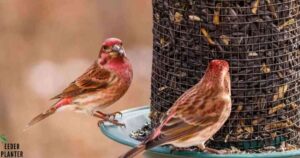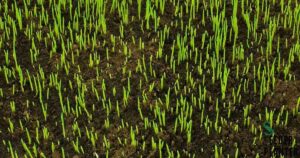It is the tallest tree in the world. So that’s why it is also called Dinosaur tree. Its scientific name is Sequoia Sempervirens. It is found in the china. And it is the oldest and most exciting family of redwood.later it was rediscovered in the 1940s and was planted in 1948 in the US.
They have a central place in the garden.They have long,slim and upright trunks that grow tall.This feature makes them incredible in the large size family.Here I will explain”An Extensive Care Guide about Coastal Redwood Bonsai. They are strong and powerful trees.
The ideal sunlight required is Eight hours.You should grow your lawn on which location where it may receive the direct light in the morning and indirect light in the afternoon during the hottest days of the summer. For better growth of the Redwood Bonsai you should join the local Bonsai club.You should attend the classes for deep knowledge.
Features
In its basic habitat it can reach out almost 110 feet above.Hearty Confers are the original tree of redwood Bonsai.Their beauty lies in their leaves.When their leaves falls down they produce an amazing scene to see.They look amazing due to their tapering shape from heavy root base. They are in a slender shape.
It can move up if their trunk is too big.The Dawn Redwood is sometimes mistaken for Bald Cypress. But it can be distinguished easily by their leaves. Because the leaves of Dawn Redwood have opposite leaves while Bald Cypress has alternating leaves.
Types
There are the following types of the Redwood Bonsai
- Coast Redwood Bonsai
- Dawn Redwood Bonsai
- Japanese Redwood Bonsai
- Giant Sequoia Bonsai
- Bald Cypress Bonsai
Coast Redwood Bonsai
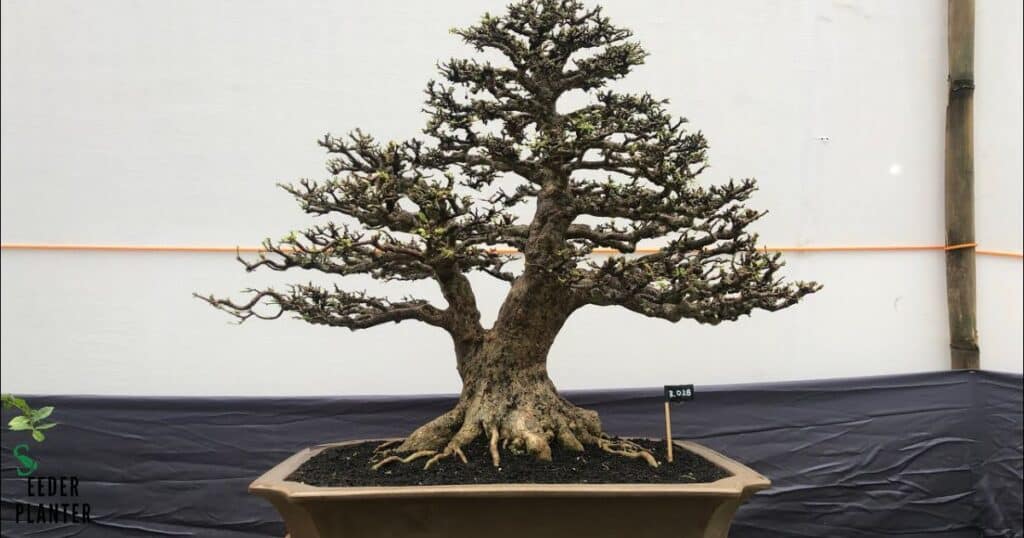
They are pint-sized versions of the majestic giants, bringing nature’s grandeur to small spaces. These miniature marvels showcase the resilience and beauty of the towering redwoods, scaled down for easy enjoyment. Cultivating these bonsai treasures offers a unique opportunity to witness the quiet strength and grace of these majestic trees in a manageable form.
With patience and care, anyone can nurture a tiny forest of Coast Redwood Bonsai,bringing the enchantment of the towering giants to their living space in a compact and charming manner.
Dawn Redwood Bonsai
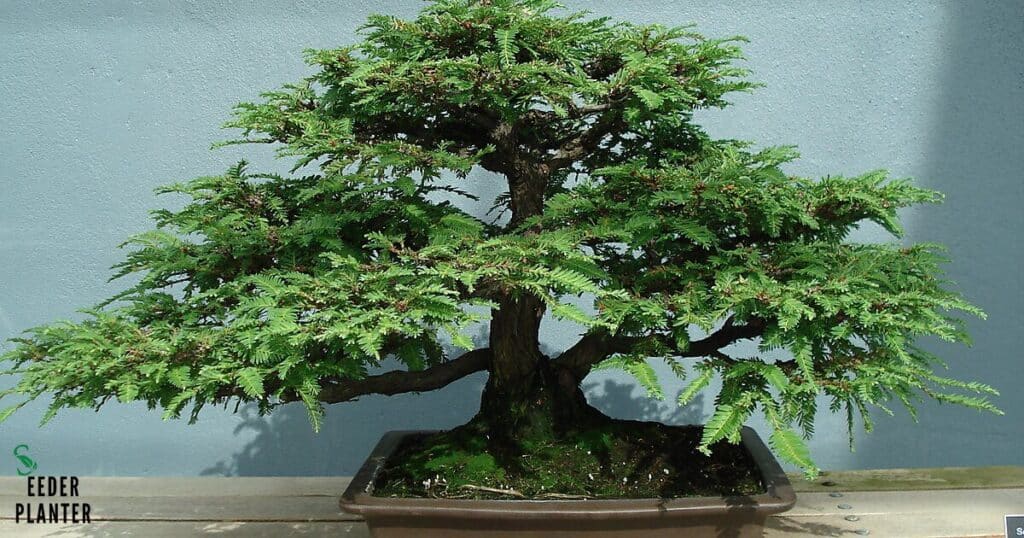
It is a petite natural wonder, captivates with its diminutive yet vibrant presence. This tiny tree, a living fossil, shares its story through delicate leaves and graceful branches. Cultivating this bonsai is a journey, where patience is the key and each leaf holds a tale of resilience.
Its compact stature conceals a rich history, making it a unique addition to any green enthusiast’s collection. Embracing simplicity, the Dawn Redwood Bonsai effortlessly weaves a narrative of endurance and beauty in the palm of your hands.
Japanese Redwood Bonsai
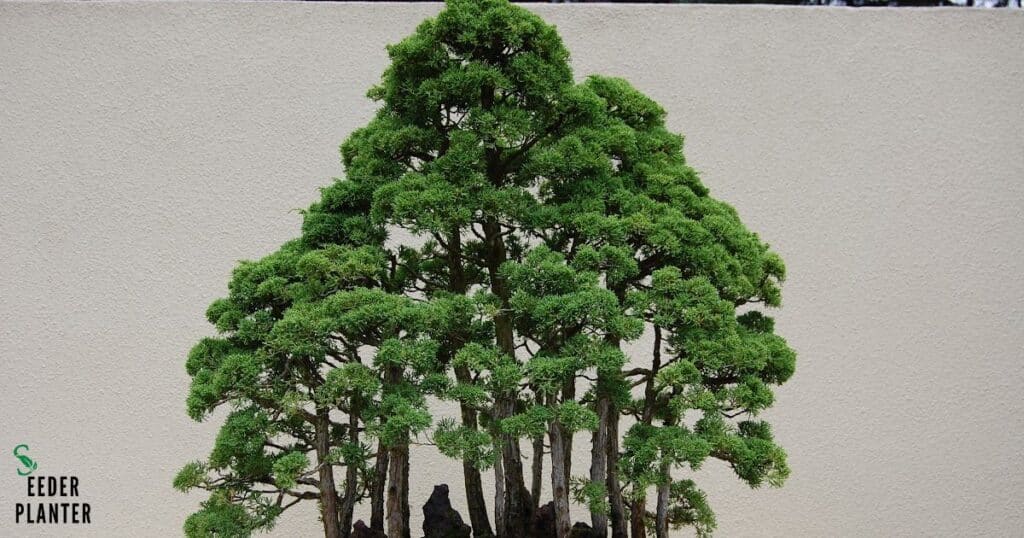
These are also known as “Akamatsu,” captivates with its petite yet vibrant presence. This bonsai, resembling a miniaturised forest giant, boasts rich, crimson foliage that gracefully dances in the breeze.This miniature marvel requires a delicate touch, as its resilience shines through in its ability to thrive in diverse environments.
The Akamatsu Bonsai, a symbol of serenity and strength, beckons enthusiasts to embark on a rewarding journey of nurturing nature’s miniature masterpiece.
Giant Sequoia Bonsai
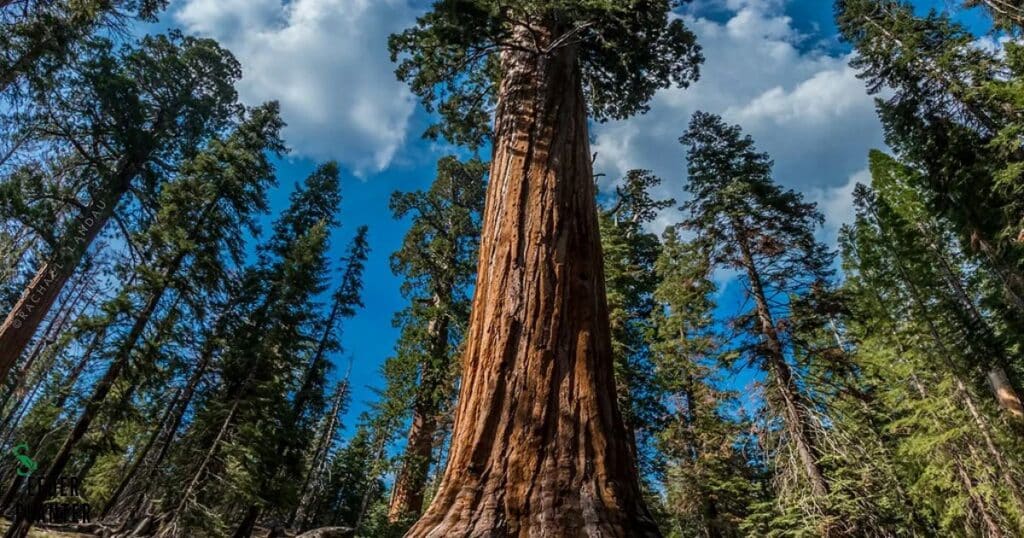
These are mini versions of the colossal redwood trees, shrunken down to fit your backyard. These pint-sized wonders mimic the grandeur of their towering relatives, offering a miniature forest experience in a tiny space. Cultivating these tiny titans is like nurturing a pocket-sized giant, with intricate branches and resilient leaves.
Imagine a Lilliputian woodland, showcasing the magnificence of nature in a compact form. These bonsai marvels bring the majesty of the towering sequoias right to your doorstep, letting you savour the awe-inspiring beauty on a smaller scale.
Bald Cypress Bonsai
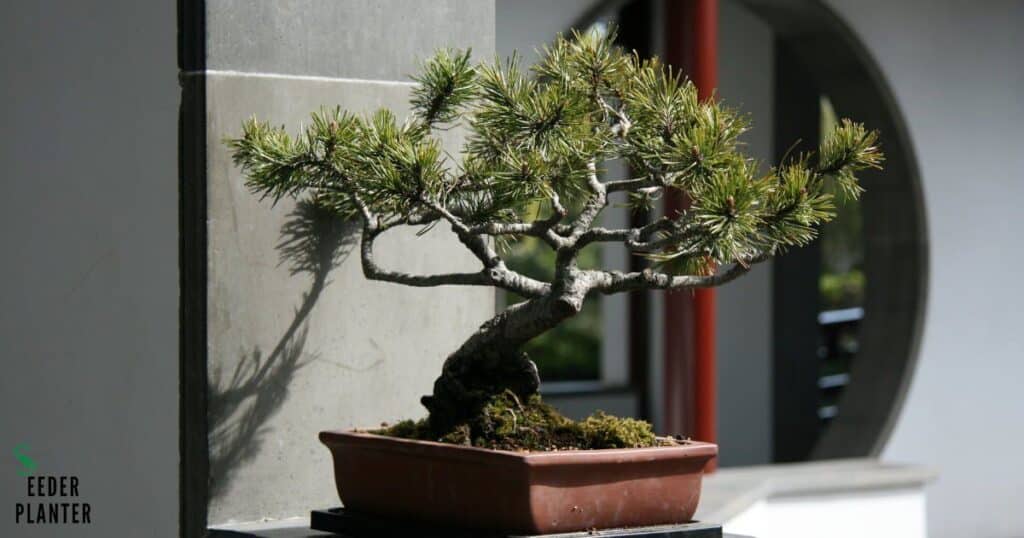
This type of Bonsai is like a miniaturised forest masterpiece, with its tiny, vibrant green leaves resembling delicate feathers. These petite trees, originating from the swamps of the southeastern United States, are adaptable and thrive in various climates. They gracefully sway in the breeze, creating a serene ambiance.
Cultivating these miniature marvels requires patience, as they grow slowly over time. The unique charm of Bald Cypress Bonsai lies in their ability to bring a touch of nature’s elegance to any space, turning small-scale gardening into an artful, rewarding experience.
Caring for your Redwood Bonsai
You should follow these instructions for excellent results..
- Sunlight
- WATERING
- TEMPERATURE/HUMIDITY
- SOIL/FERTILIZER
- REPOTTING
- PROPAGATION
- PRUNING
- Wiring and Bending
Sunlight
Sunlight is like a bonsai’s energy drink, fueling its growth and vibrancy. Basking in the sun’s warm embrace, bonsai trees flourish, soaking in the light to produce lush green leaves. The sun’s rays act as a natural elixir, invigorating these miniature wonders and enhancing their overall health.
Without sunlight, bonsai can become lethargic, losing their charm and vitality. So, think of sunlight as the bonsai’s best friend, providing the essential spark for a flourishing and radiant miniature world.
WATERING
1. Keep your bonsai hydrated by giving it a good drink of water regularly.
2. Make sure to moisten the soil around your bonsai to keep it thriving.
3. Give your tiny tree a sip of water when the topsoil feels dry to the touch.
4. Keep an eye on the moisture levels in the pot, ensuring it’s neither too wet nor too dry.
5. Provide your bonsai with a gentle shower of water, allowing it to absorb moisture evenly.
6. Don’t forget to quench the thirst of your miniature masterpiece to promote healthy growth.
7. Water your bonsai with care, making sure not to drown it but keeping it comfortably moist.
8. Hydrate your little tree friend by sprinkling water evenly across its tiny landscape.
TEMPERATURE/HUMIDITY

Maintaining the right atmosphere for your bonsai is like creating a cosy home for a friend. Think of temperature as the bonsai’s comfort level – not too hot, not too cold. Humidity is the bonsai’s hydration buddy, ensuring it stays as content as a well-watered plant.
Imagine the temperature as the bonsai’s mood thermostat and humidity as its hydration hug. Picture it like finding the perfect sweater for your little green companion.
SOIL/FERTILIZER
Bonsai thrive when nestled in nutrient-rich soil, akin to a cosy home for these petite wonders. Selecting a fertile mix ensures their tiny roots find abundant nourishment. Picture it like a balanced buffet, where the soil acts as the nutritious spread, catering to the bonsai’s appetite for growth.
Think of fertiliser as the bonsai’s multivitamin supplement, boosting its well-being. It’s like a tailored care routine for your miniaturised arboreal companion, ensuring it stands tall in its pint-sized world.
REPOTTING
Transferring your bonsai to a new home, or “repotting,” is like giving it a cosy makeover. Imagine moving it to a fresh, snug pot – a plant spa day! This process isn’t about being a plant surgeon, it’s more like changing a comfy bed.
Gently shifting your bonsai to a new pot with nutrient-rich soil is like upgrading its living room. It’s like hitting the refresh button for your miniature tree, ensuring it stays happy, healthy, and stylish in its new, chic container.
PROPAGATION
The spread of ideas, or “propagation,” in the world of bonsai is like the gentle cultivation of a miniature forest. Sharing and nurturing, allowing the beauty of these tiny trees to flourish. As knowledge about bonsai grows, enthusiasts cultivate a community, branching out with wisdom and techniques.
The propagation of bonsai knowledge is akin to planting seeds of understanding, fostering a collective growth. It mirrors the meticulous care given to these small, majestic trees. It’s a journey where insights and skills take root, sprouting into a vibrant forest of shared passion.
PRUNING
Pruning is like sculpting for bonsai, where trimming becomes an art form, shaping and refining the miniature tree. Think of it as giving your bonsai a stylish haircut, selectively snipping away excess growth to highlight its natural beauty. This process is akin to crafting a tiny masterpiece, as you delicately remove unwanted branches
It allows the bonsai’s true essence to shine. Just like a careful gardener, you’re creating a harmonious balance, ensuring your bonsai thrives in a compact and aesthetically pleasing form, ready to captivate with its petite charm.
Wiring and Bending
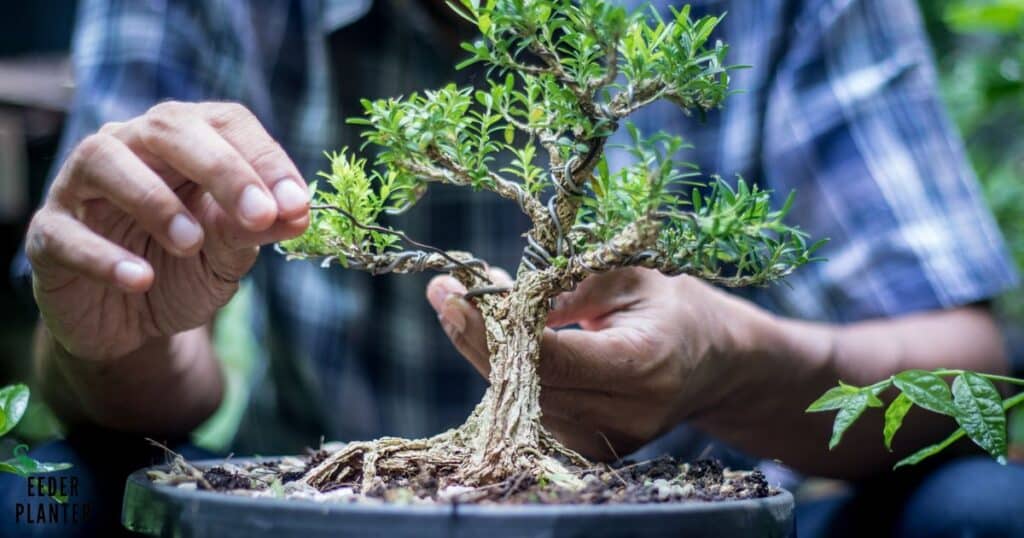
Creating a bonsai is like crafting nature’s sculpture, where the art of “wiring” involves gently guiding branches with flexible threads, akin to shaping a living masterpiece. Picture it as a dance, where you’re coaxing the tree’s limbs into an elegant choreography.
Bending, on the other hand, is the gentle persuasion of the trunk’s posture, allowing it to gracefully bow and sway. It’s a dance of collaboration between nature and nurturer, where every twist and turn tells a story in the silent language of bonsai.
Recommended Redwood Bonsai Tree Styles
Selecting ideal styles for your Redwood Bonsai involves choosing from diverse options, such as the classic informal upright, resembling a full-sized tree with a slightly slanted trunk. The cascading style, where branches elegantly spill downward, exudes natural grace. Embrace the broom style for a balanced, symmetrical appearance akin to a broom’s bristles.
Consider the windswept style, capturing the essence of a tree shaped by prevailing winds. Ultimately, choose a style that resonates with your aesthetic preference and cultivates a harmonious connection with your Redwood Bonsai.
Common Problems with Redwood Bonsai Trees
Redwood bonsai trees can encounter common issues like leaf browning, which occurs when the leaves turn brown and dry. Overwatering can lead to root rot, harming the plant’s foundation. Insufficient sunlight may result in sparse foliage and stunted growth. Pests, such as aphids or spider mites, can threaten the tree’s health.
To ensure optimal growth, it’s essential to strike a balance in watering, provide ample sunlight, and promptly address any pest invasions. Regularly monitor your redwood bonsai’s condition to cultivate a thriving miniature tree.
Frequently Asked Questions
What is the most expensive bonsai tree?
It is a centuries-old pine Bonsai.
What is the most lucky bonsai tree?
The most lucky is Peepal Bonsai .
What is the smallest bonsai tree?
Keishi is the smallest Bonsai. It is just one inch in height.
Can you bonsai redwoods?
Yes, redwoods, such as coastal redwoods and dawn redwoods, can be bonsaied, but they require careful attention to their specific needs and a longer-term commitment due to their rapid growth.
Final Thoughts
Success lies in a delicate dance between nature and nurture. This extensive care guide serves as a compass for enthusiasts navigating the miniature landscapes of Coast Redwood and Dawn Redwood bonsai. Patience intertwines with precision, as pruning shapes not just branches but a living masterpiece.
From the stoic elegance of the Coast Redwood to the whimsical charm of the Dawn Redwood, each demands a tailored approach. A symphony of watering, fertilising, and mindful observation orchestrates the thriving harmony of these arboreal companions. Embrace the journey, for in the meticulous care of Redwood Bonsai, a testament to resilience and artistry takes root.

I am Alexander James, a seasoned professional with 4 years of expertise, brings passion and skill to every project. Elevate your experience with my knowledge and creativity.
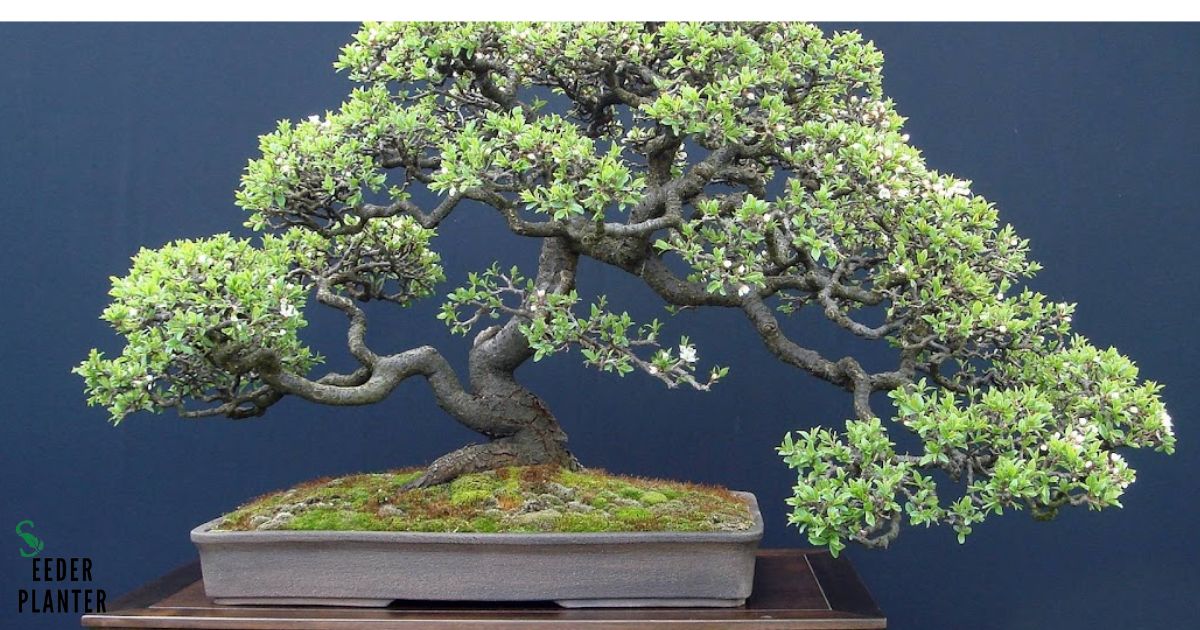
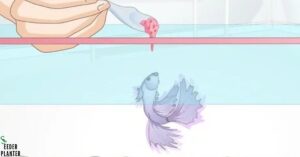

![Hollyhock Seeds: The Complete Guide to Success [2024]](https://seederabout.com/wp-content/uploads/2024/10/Hollyhock-Seeds-The-Complete-Guide-to-Success-2024-300x157.jpg)

